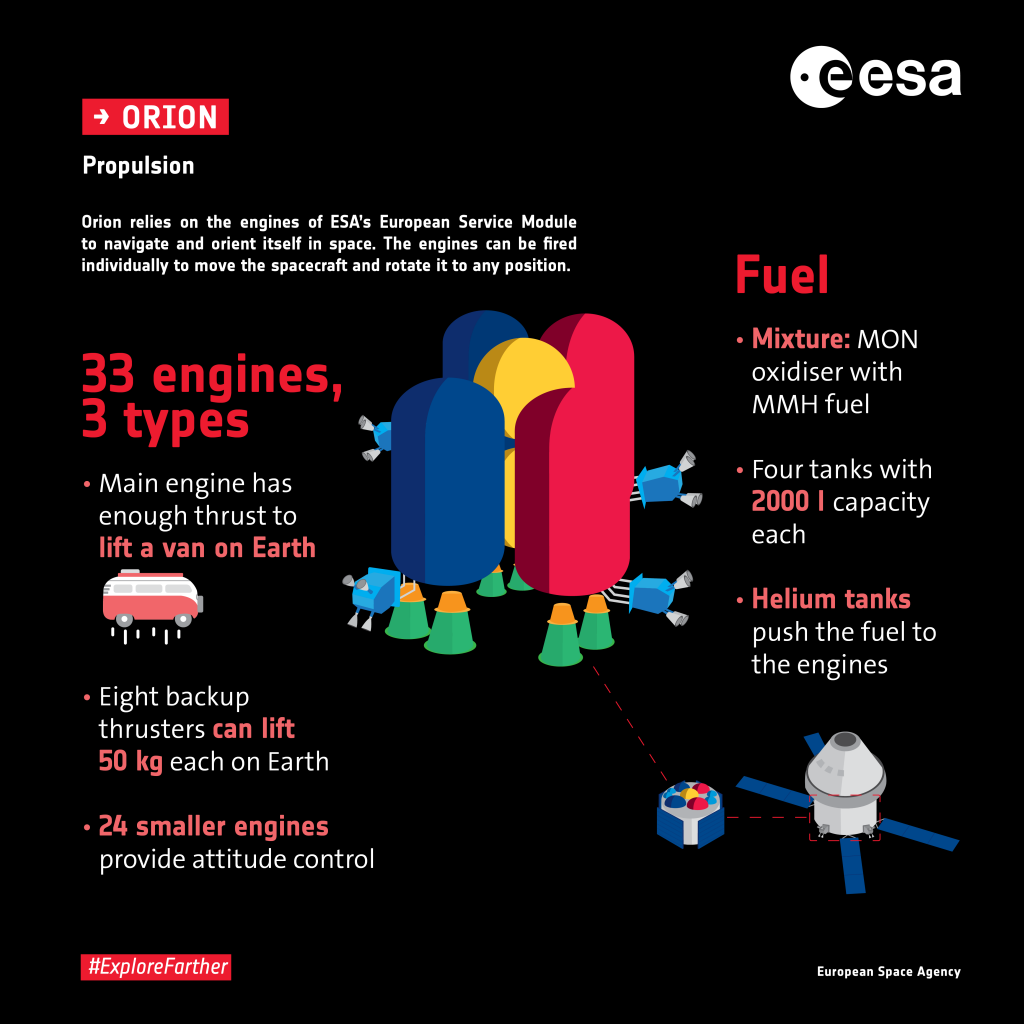With the Green Run rocket firing test finished, the European Service Module is being fuelled. Since our last Orion and the European Service Module update for Artemis I, the spacecraft has moved from the NASA Kennedy Space Center’s Neil Armstrong Operations and Checkout facility a few kilometres down the road to the Multi Payload Processing Facility. The names of these buildings give the game away, the first Orion spacecraft has been checked out and is ready for the next step on the road to space: processing for launch.
The Crew Service Module was powered on to check systems again after its short voyage. Afterwards it was serviced with MON3 (Mixed Oxides of Nitrogen) as the spacecraft’s oxidiser propellant. This propellant is toxic and has strong corrosion potential so great care is taken to protect personnel and the integrity of the spacecraft during this operation. After the oxidiser comes the fuel (Mono Methyl Hydrazine) which will be pumped into the European Service Module’s tanks next. During flight engine operations, when the fuel is mixed with the oxidiser in the engine combustion chambers the mixture will expand and push out of the thruster nozzles to control Orion’s trajectory during its mission around the Moon and back to Earth.

Fueling started last week and MON3 loading was completed on 1 April, MMH will follow later. Afterwards the system will be serviced in high pressure helium that serves as a pressurisation agent to the European Service Module propellant tanks, ensuring the correct pressure at the engine inlets.
Once this is completed, the spacecraft will be moved to the nearby Launch Abort System Facility, where it will be further integrated with the launch Abort System and then to the Vehicle Assembly Building where the whole composite will be hoisted on top of the SLS rocket, waiting for the roll-out to the launchpad and launch.



 Automated Transfer Vehicle page
Automated Transfer Vehicle page ATV blog archive
ATV blog archive
Discussion: no comments